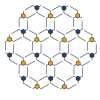The congress will be held in Hyderabad, India in 2017. Petra Bombicz is the member of the European Chemical Crystallography group. https://www.iucr2017.org/
Author: admin
Structural, analytical and DSC references to resolution of 2-Methoxy-2-phenylacetic Acid with Chiral 1-Cyclohexylethylamines through Gas-Antisolvent Precipitation
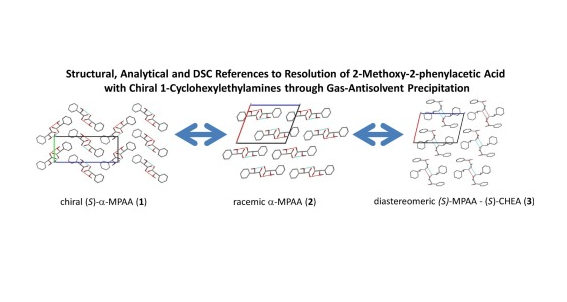
Amit D. Zodge, Petra Bombicz, Edit Székely, György Pokol, János Madarász Thermochimica Acta, 648, 23-31, (2017) ABSTRACT The system of intermolecular interactions is very similar in the solid state of the chiral and racemic α-methoxyphenylacetic acids (α-MPAA) indicated by both Differential Scanning Calorimetry (DSC)and FTIR-spectroscopy, and even proved by single crystal structure determination. It makes the resolution of such a racemate compound challenging even by supercritical fluid xtraction. The chiral(S)-α-methoxyphenylacetic acid (1) crystallizes in orthorhombic crystal system (space group P212121,a Read More …
A novel 1,3,5-triaminocyclohexane-based tripodal ligand forms a unique tetra(pyrazolate)-bridged tricopper(II) core: solution equilibrium, structure and catecholase activity
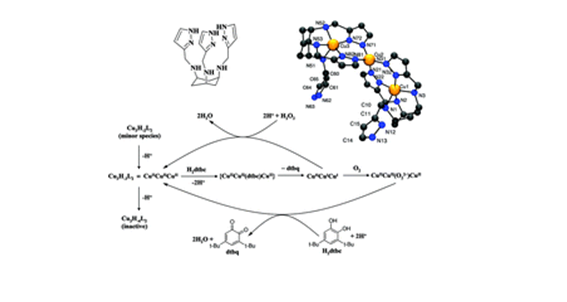
Attila Szorcsik, Ferenc Matyuska, Attila Bényei, Nóra V. Nagy, Róbert K. Szilágyi and Tamás Gajda* Dalton Trans., 2016, 45, 14998-15012 ABSTRACT Copper(II) complexes of a polydentate tripodal ligand L × 3HCl (L = N,N’,N’’-tris(5-pyrazolylmethyl)-cis, cis-1,3,5-triaminocyclohexane) were characterized in both solution and solid states. Combined evaluation of potentiometric, UV-VIS, and EPR data indicated the formation of two mononuclear (CuHL, CuL) and three trinuclear (Cu3H−xL2, x = 2, 3, 4) complexes. The high stability and spectroscopic properties of the CuL species indicate Read More …
Symmetry-controlled rearrangements in Piedfort Units (PU) of 2,4,6-triaryloxy-1,3,5-triazines
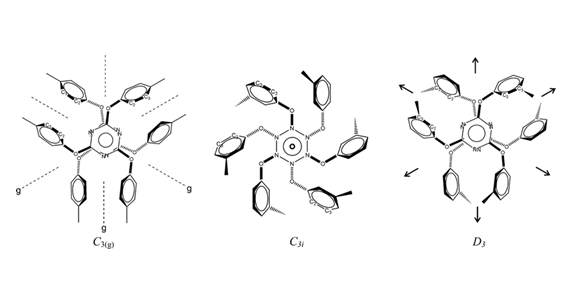
Petra Bombicz, Nikoletta B. Báthori, Alajos Kálmán Struct. Chem., 26, 1611-1619, 2015 Abstract 2,4,6-triaryloxy-1,3,5-triazines (POT) form in general molecular diads, termed as Piedfort Units (PU), in their crystals and their clathrates. Their bulky phenyl substituents (R = Me, F, Cl, Br, I, CN) in ortho, meta or para position substantially hinder internal rotations. Instead, non-crystallographic rotations (ncr) or translations (nct) are the bridges between the semirigid homologues or analogues, occasionally polymorphs. They occur in the space groups R3c (161), Read More …
Strain-Driven Direct Cross-Aldol and -Ketol Reactions of Four-Membered Heterocyclic Ketones
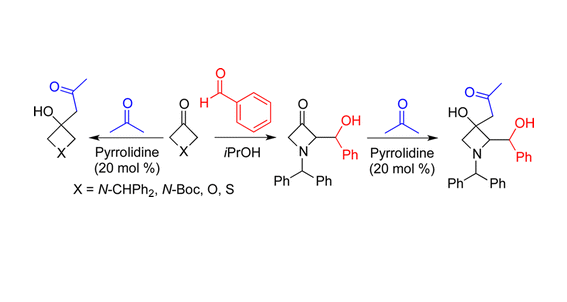
Zoltán Dobi, Tamás Holczbauer, and Tibor Soós* Org. Lett., 2015, 17 (11), pp 2634–2637 Abstract Owing to the ring strain and α-heteroatom effect, the four-membered heterocyclic ketones can undergo direct cross-aldol and -ketol reactions without the need for preformed enol or “enolate-like” intermediates. Besides the organocatalyzed cross-ketol addition onto their highly active carbonyl group, their ability to act as a nucleophilic donor has also been explored. As a result, a number of discrete aldol adducts were synthesized and the distinct reactivities were successfully combined into Read More …
Supramolecular Interactions in the Solid State
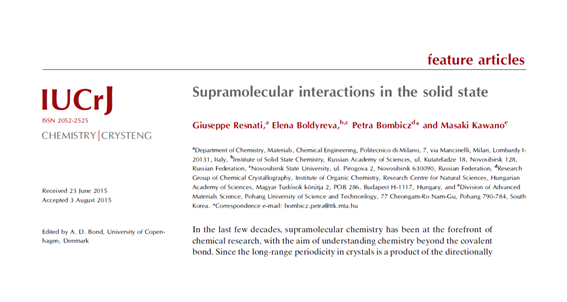
Giuseppe Resnati, Elena Boldyreva, Petra Bombicz, Masaki Kawano IUCrJ, 2, 675-690 (2015) Abstract In the last few decades, supramolecular chemistry has been at the forefront of chemical research, with the aim of understanding chemistry beyond the covalent bond. Since the long-range periodicity in crystals is a product of the directionally specific short-range intermolecular interactions that are responsible for molecular assembly, analysis of crystalline solids provides a primary means to investigate intermolecular interactions and recognition phenomena. This article discusses some areas Read More …
Tamás Holczbauer won the Academic Research Prize for Young Scientist
His proposal titled “Development of crystallization processes to establish solid state molecular associations” was awarded by the Hungarian Academy of Sciences. Congratulations Tamás! See at the webpage of the Hungarian Academy of Sciences
Vanadium(IV/V) complexes of Triapine and related thiosemicarbazones: Synthesis, solution equilibrium and bioactivity
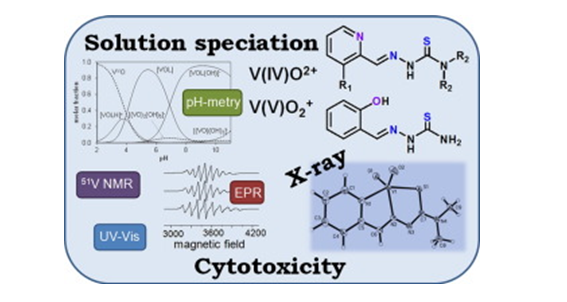
Kowol CR, Nagy NV, Jakusch T, Roller A, Heffeter P, Keppler BK, Enyedy ÉA Journal of Inorganic Biochemistry 152 (2015) 62–73 Abstract The stoichiometry and thermodynamic stability of vanadium(IV/V) complexes of Triapine and two related α(N)-heterocyclic thiosemicarbazones (TSCs) with potential antitumor activity have been determined by pH-potentiometry, EPR and 51V NMR spectroscopy in 30% (w/w) dimethyl sulfoxide/water solvent mixtures. In all cases, mono-ligand complexes in different protonation states were identified. Dimethylation of the terminal amino group resulted in the formation of Read More …
Fine tuning of crystal architecture by intermolecular interactions: synthon engineering
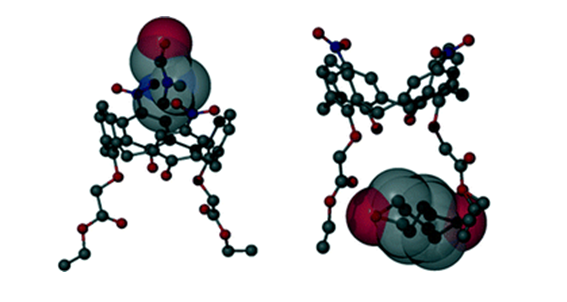
Petra Bombicz, Tobias Gruber, Conrad Fischer, Edwin Weber, Alajos Kálmán CrystEngComm, 16 (18), 3646 – 3654, 2014 Abstract There has been a long time effort to influence or favourably fine tune structural properties by introduction of substituents or guest molecules of different sizes, shapes and chemical composition to consequently alter physico-chemical properties of the respective crystals. These attempts require the recognition, understanding and application of intermolecular interactions, crystallographic and, in case of occurrence, non-crystallographic symmetries. It brings us to the Read More …
